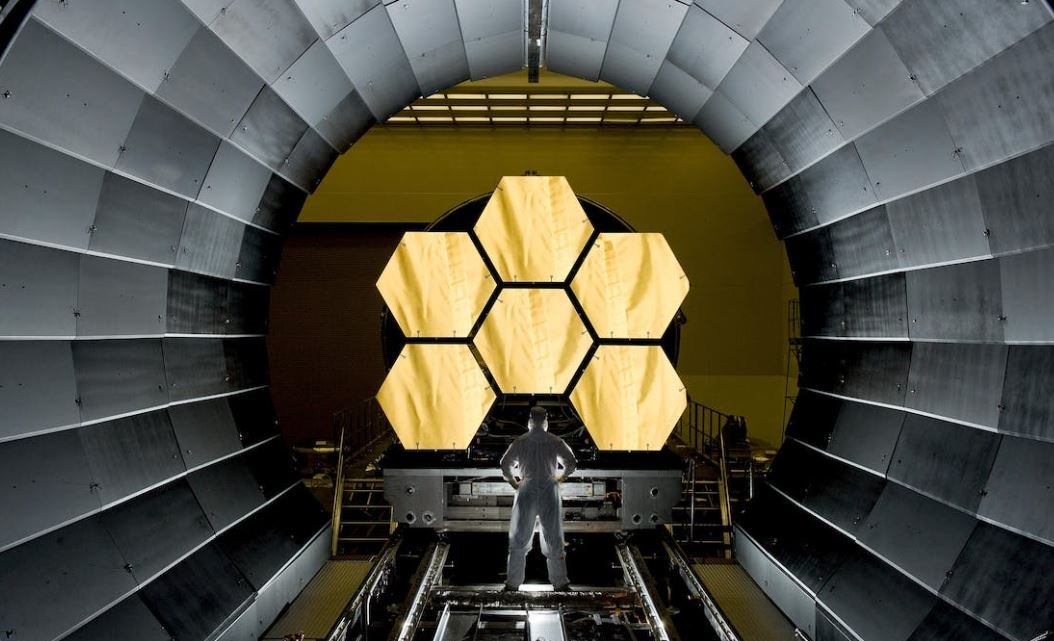SpaceX and NASA
SpaceX and NASA have been key players in the exploration of space, with both organizations pushing the boundaries of what is possible. While SpaceX focuses on commercial space travel and the development of reusable rockets, NASA is responsible for scientific research and exploration of our solar system and beyond.
Key Takeaways
- SpaceX and NASA are leading the way in space exploration.
- SpaceX focuses on commercial space travel and reusable rockets.
- NASA is responsible for scientific research and exploration.
**SpaceX**, founded by Elon Musk in 2002, has revolutionized the aerospace industry. Its **Falcon Heavy** rocket has the ability to lift more payload into orbit than any other currently operational rocket, making it ideal for commercial satellite launches. *SpaceX has successfully landed and reused multiple rocket boosters, significantly reducing the cost of space travel.*
On the other hand, **NASA** has a long history of space exploration, dating back to its establishment in 1958. NASA’s missions have included sending astronauts to the Moon, exploring Mars with rovers, and studying the outer planets of our solar system. *The data and discoveries made by NASA have greatly contributed to our understanding of the universe.*
SpaceX’s Achievements
Over the years, SpaceX has achieved several notable milestones:
- Successful launch of the Falcon 1 rocket into orbit in 2008.
- First privately-funded spacecraft, Dragon, to dock with the International Space Station (ISS) in 2012.
- First commercial crewed mission, Demo-2, to the ISS in 2020.
* SpaceX’s continued advancements in rocket technology have opened up new possibilities for space travel and exploration.*
NASA’s Missions and Discoveries
NASA has led numerous groundbreaking missions:
- **Apollo 11:** The first manned mission to land on the Moon in 1969.
- **Voyager:** The spacecraft that provided valuable data about the outer planets of our solar system.
- **Curiosity:** The rover currently exploring the surface of Mars, providing insights into its geological history.
*NASA’s dedication to scientific research has expanded our knowledge of the universe and inspired future generations of astronomers and astronauts.*
SpaceX vs NASA: A Comparison
| Aspect | SpaceX | NASA |
|---|---|---|
| Establishment | 2002 | 1958 |
| Primary Focus | Commercial Space Travel | Scientific Research and Exploration |
| Spacecraft or Programs | SpaceX | NASA |
|---|---|---|
| Falcon Heavy | Yes | No |
| Dragon | Yes | No |
| Mission | SpaceX | NASA |
|---|---|---|
| First Manned Mission to the Moon | No | Yes (Apollo 11) |
| Exploration of Mars | No | Yes (Curiosity Rover) |
In conclusion, SpaceX and NASA have played instrumental roles in the field of space exploration. While SpaceX focuses on commercial space travel and the development of reusable rockets, NASA continues to conduct vital scientific research and exploration of our solar system and beyond. Together, they have reshaped our understanding of the universe and propelled humanity into a new era of space exploration.

Common Misconceptions
SpaceX:
One common misconception people have about SpaceX is that it is solely focused on sending humans to Mars. In reality, while Mars colonization is one of SpaceX’s long-term goals, the company is actively involved in launching satellites, providing commercial space travel, and conducting scientific research.
- SpaceX offers satellite launch and deployment services for various organizations.
- The company has launched numerous missions to resupply the International Space Station.
- SpaceX is actively developing the Starship spacecraft, intended for missions beyond Mars, such as interplanetary travel and moon landings.
NASA:
An oft-misunderstood aspect of NASA is that it is solely responsible for all space-related activities. While NASA plays a crucial role in space exploration, there are various international space agencies and private companies involved in the field. NASA often collaborates with these entities, sharing resources, knowledge, and expertise.
- NASA collaborates with international partners, such as the European Space Agency, for joint projects and missions.
- Private companies like SpaceX, Blue Origin, and Boeing work closely with NASA on developing and launching spacecrafts.
- NASA actively supports and funds research and projects from universities, research institutions, and private organizations.
Perceptions towards SpaceX and NASA:
Another common misconception is that SpaceX and NASA are in direct competition with each other. While there may be overlap and occasional rivalry, SpaceX and NASA have a history of collaboration and cooperation. SpaceX has been awarded contracts by NASA for resupply missions and is involved in the development of the Artemis program, aimed at returning humans to the Moon.
- NASA has awarded SpaceX with contracts for launching cargo and crew to the International Space Station.
- SpaceX actively participates in NASA’s Commercial Crew Program, working on crewed missions to the ISS.
- Both SpaceX and NASA share a common goal of advancing space exploration and making space more accessible to humanity.

SpaceX and NASA
The article highlights some interesting points and data related to SpaceX and NASA, showcasing their remarkable achievements and significant contributions to the field of space exploration.
Successful SpaceX Missions
Table showing the successful missions carried out by SpaceX:
| Mission Name | Date |
|---|---|
| CRS-1 | October 7, 2012 |
| CRS-2 | March 1, 2013 |
| CRS-3 | April 18, 2014 |
| CRS-4 | September 21, 2014 |
NASA’s International Space Station (ISS) Missions
Showcasing NASA’s various missions to the International Space Station:
| Mission Name | Date |
|---|---|
| Expedition 1 | November 2, 2000 – March 21, 2001 |
| Expedition 6 | November 23, 2002 – May 3, 2003 |
| Expedition 20 | May 27, 2009 – November 30, 2009 |
| Expedition 36 | May 28, 2013 – September 10, 2013 |
SpaceX Falcon 9 Rocket Specifications
Highlighting the specifications of SpaceX’s Falcon 9 Rocket:
| Feature | Value |
|---|---|
| Height | 70 meters (230 feet) |
| Diameter | 3.7 meters (12 feet) |
| Mass | 549,054 kg (1,210,000 pounds) |
| Payload to Low Earth Orbit (LEO) | 22,800 kg (50,265 pounds) |
| First Stage Engines | 9 Merlin engines |
NASA Astronauts Trained by SpaceX
Detailing the NASA astronauts who received training from SpaceX:
| Astronaut Name | Training Year |
|---|---|
| Bob Behnken | 2015 |
| Doug Hurley | 2015 |
| Victor Glover | 2018 |
| Mike Hopkins | 2018 |
SpaceX Starship Development
Providing an overview of the SpaceX Starship development phases:
| Phase | Description |
|---|---|
| Starship Alpha | Prototypes constructed for early testing |
| Starship Beta | Refined design with enhanced capabilities |
| Starship Gamma | Production-ready version for commercial use |
NASA Robotic Missions
Highlighting some of the notable robotic missions conducted by NASA:
| Mission Name | Date |
|---|---|
| Viking 1 | July 20, 1976 – November 13, 1982 |
| Viking 2 | September 9, 1976 – April 11, 1980 |
| Mars Pathfinder | December 4, 1996 – March 27, 1997 |
| Curiosity Rover | August 6, 2012 – Present |
SpaceX Funding History
Displaying the funding sources and investments received by SpaceX:
| Year | Funding Source |
|---|---|
| 2002 | $100 million from Elon Musk |
| 2006 | $20 million from Founders Fund |
| 2008 | $1.84 billion from NASA (Commercial Resupply Services contract) |
| 2012 | $440 million from NASA (Commercial Crew Development program) |
NASA Mars Rover Missions
Listing the impressive NASA Mars Rover missions:
| Mission Name | Date |
|---|---|
| Sojourner | 1997 |
| Spirit | 2004 – 2010 |
| Opportunity | 2004 – 2018 |
| Curiosity | 2012 – Present |
SpaceX Planetary Exploration Missions
Highlighting SpaceX’s endeavors in planetary exploration:
| Destination | Mission |
|---|---|
| Mars | Mars Colonization |
| Moon | Dearmoon Mission (Lunar Tourism) |
| Earth Orbit | Starlink Broadband Satellite Network |
Conclusion
In this article, we explored various aspects of SpaceX and NASA, from their successful missions, rocket specifications, and robotic explorations to funding history, astronaut training, and future planetary exploration plans. SpaceX’s innovative achievements, combined with NASA’s experience and rich scientific track record, have significantly advanced human understanding of space while paving the way for future missions and discoveries. This collaboration between SpaceX and NASA serves as a testament to the remarkable progress humanity has made in the realm of space exploration.
Frequently Asked Questions
SpaceX and NASA




